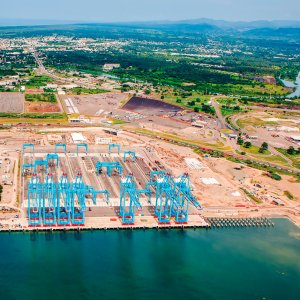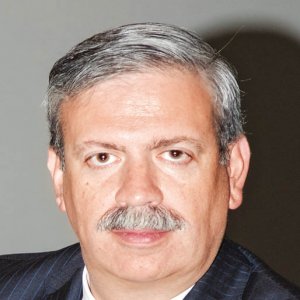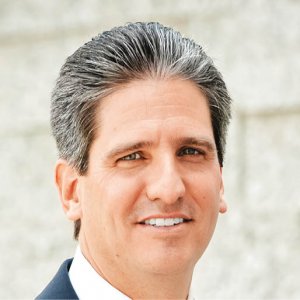These Numbers Add up to Success

STORY INLINE POST
Q: How has Guanajuato’s Puerto Interior impacted the Mexican market?
A: Puerto Interior is an unprecedented logistics infrastructure project in Mexico and Latin America that has been breaking records since its creation 22 years ago. It focuses on cargo applications. The airport had targeted 1.5 million passengers by 2020 and it met this goal in 2015, making it the fastest growing airport in the country. Regardless of political terms and affiliations, the government’s support of the project has been steadfast over the years. We are building a community with high-end companies that share the same standards and values. Puerto Interior expects them to reach a certain degree of process specialization and information availability is essential for this endeavor. We are creating intranets, portals and kiosks to support everyone’s operations. Its intermodal connectivity goes as far as Chicago, although it is expected to expand even further in the near term. We also have the largest customs platform in the country. Puerto Interior is a people-oriented development, rather than an infrastructure-focused project, so with that in mind we developed an organic design whereby pedestrian and bicycle lanes are interconnected.
Puerto Interior’s success is unusual for government-led initiatives but the numbers speak for themselves. In 2015, it shipped 26,000 containers and it is expected to reach 45,000 by 2017. In total, Guanajuato’s exports rose by 23 percent between 2013 and 2014, a sum of US$20 billion. The municipality of Silao was responsible for 62 percent of the growth. We have secured business from 100 premium
Among the projects is the new port of Matamoros that will address expected demand from oil exploration in the northern part of the Gulf of Mexico. Altamira, developed 30 years ago, is a noted industrial port focused on the petrochemicals industry and processes containers. Its security system is being expanded. Another important port that is garnering attention is Tuxpan, especially regarding the investment made by the private sector in the development of the new SSA Container Terminal. “While there have been major budget cuts, these do not severely impact the development of ports, only the share between the public and private sectors,” Martínez says.
Besides oil, the ports are of strategic importance to the country’s automotive sector considering Mexico produces 2.4 million vehicles annually, of which 900,000 or so are exported. The ports also receive imported auto parts to fuel the country’s industry. “The automotive industry contributes a larger share to the Mexican economy than oil, so we need communication nodes and a fluid mobility system,” says Martínez.
The sector has undergone important changes since 1994, when the private sector was given permission to participate in infrastructure development. “This crucial companies, 74 of which have consolidated their operations. Almost 50 percent of the established companies are Japanese. Among the businesses here are enterprises like Vesta, Bimsa and Prudential. Pirelli’s plant is one of the largest in Puerto Interior at 160,000m2 and this is expected to double in size in 2017. The second largest plant is DENSO, followed by Volkswagen. Nivea’s operations have even been awarded the LEED Platinum certification.
Q: What is the role of technology in Puerto Interior and how is it different from other industrial parks?
A: Guanajuato Puerto Interior goes above and beyond the average industrial park. It is a logistics center supported by an airport, an expanding container platform, one of the state’s civil protection centers, a multimodal railway terminal and an enviable highway connection. We have an internal customs house and one of Mexico’s strongest industrial parks. Puerto Interior has an 11-storey building with advanced electronics. We want to acquire the status of Smart City by installing and securing the proper technology.
Close to 96 percent of Puerto Interior’s industrial area is occupied and over 1.2 million m2 of its land houses numerous projects that add value to the region. On average, 50 percent of a land parcel can be used for construction and policy transition channeled private investment into ports and railroads, which has allowed the sector to grow at twice the rate of GDP,” says Martínez. “I believe the success of the port industry today is intrinsically linked with the sector’s opening to private investment, without which today’s infrastructure environment might look very different.”
Most of the country’s freight is moved by land but Martínez says that when the distance between the two locations exceeds 500km, transport modes such as rail and sea are much more efficient. Although Mexico has 14 highway corridors, many of the bypasses and bridges are outdated or lack proper development. The country also has 22,000km of railroad infrastructure, which dates back a century.
AMIP believes the focus of development should be on creating greater numbers of horizontal corridors to prevent saturation. Martínez suggests increasing maritime traffic, since this would represent a much cheaper option. “Horizontal corridors should be developed to complement the existing vertical ones,” he says. “The focus should be on the development and efficiency of ports.” of the remainder 80 percent is allocated to parking spaces and 20 percent to green spaces. If regulations were not put in place, Puerto Interior’s daily influx of 8,000 vehicles due to its 15,000 dayworkers and 2,000 Polytechnic students would be uncontrollable. Having a Polytechnic campus, its own hospital, hotels and day care services are factors that differentiate Puerto Interior.
Q: What are Puerto Interior’s goals in the near term?
A: By the end of 2016 we will add 200,000m2 to the existing 1.2 million we own. Although the automotive industry is the segment with most participation, not all of Puerto Interior’s businesses specialize in this sector. The aerospace industry will soon be included thanks to the platforms and bridges under construction. Keeping in line with the latest technological developments, we are including aeronautical wind tunnel testing. We are not restricted by infrastructure development and that differentiates us from ordinary industrial parks as we provide additional services. Puerto Interior divides its operations by service, logistics and innovation areas to create a technological city in Silao. Supported by the National Council for Science and Technology (CONACYT)’s 400 research engineers, we strive to be technology developers instead of technology importers.






















